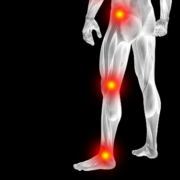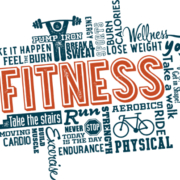Chiropractic Care: Can It Really Help You Live Pain Free?
There are plenty of people who say that chiropractic made a significant difference in their lives, relieving pain and increasing mobility. Still, some skeptics want scientific proof that it helps with managing pain and, in many cases, eliminating it altogether. While chiropractic patient testimonies are great, included here is a collection of cold, hard, facts – scientific studies on chiropractic care and its effectiveness in treating pain.
Systematic review of evaluations of chiropractic care for pain management.
This review, published in August 2016, examined six randomized controlled trials and three full economic evaluations to determine the effectiveness of chiropractic care as compared to exercise therapy, physical therapy, and medical care. Chiropractic care was found to be comparable to or better than all three of these, particularly when managing pain.
They found “moderate evidence” that showed chiropractic care is just as effective as physical therapy. The evidence in the other areas was limited, but still gave chiropractic high marks.
Spinal manipulation for treating low back pain is as effective as more traditional treatments.
The National Center for Complementary and Integrative Health studied several clinical trials and reviews regarding chiropractic care. Time and again, chiropractic was found to be at least as effective as other pain reducing interventions.
Chiropractic patients can have more days of being pain free while avoiding surgery, invasive medical procedures, and medications that have harmful side effects. In one study, they found that chiropractic care is as effective as or better than more conventional medical care for as many as 18 months.
Chiropractic patients are less likely to use prescription pain killers like opioids.
James “Jim” Whedon, DC, MS, is a researcher at the Southern California University of Health Sciences, and is co-chair of the Research Working Group of the Academic Collaborative for Integrative Health. He examined the records of 33,000 adults in the New Hampshire All Payer Claims Database who registered as experiencing lower back pain. A little more than a third of those received chiropractic care. Of that group, only 38 percent had one or more prescriptions for an opioid, but that number jumped to 61 percent in the group who did not receive chiropractic care.
Upon examination of the related circumstances, Whedon concluded that the chiropractic patients were 57 percent less likely to fill an opioid prescription. This is a testament to the effectiveness of using chiropractic for pain relief.
Overwhelming research shows that chiropractic care is usually the best option when treating pain.
The American Chiropractic Association summarizes a number of studies and research findings that support the use of chiropractic care for pain. These studies recommended chiropractic as a safer, effective alternative to pharmaceuticals.
Others advocate incorporating chiropractic care with physical therapy and exercise for optimal results. One study (Goertz et al. (2013), Spine) asserts that using chiropractic manipulative therapy along with standard medical care provides a “significant advantage for decreasing pain and improving physical function…” Others shows that it reduced the chances of the patient having to undergo surgery and could manage their pain without drugs.
The evidence is overwhelming. Yes, regular chiropractic care can really help a person to live pain free. It also helps to follow the chiropractor’s recommendations regarding lifestyle changes and diet as well as taking any supplements that he or she advises.
While spinal manipulation is a big part of chiropractic care, it isn’t the only part. The chiropractor may recommend special stretches to do in between sessions or special supplements that can help the body to heal. That is what makes chiropractic so effective; it treats the entire body, not just the symptoms.
Start living pain free! Give us a call at (780)455-2112 to schedule your assessment with one of our wellness chiropractic doctors! Visit www.ocwc.ca to learn more about our clinic.



